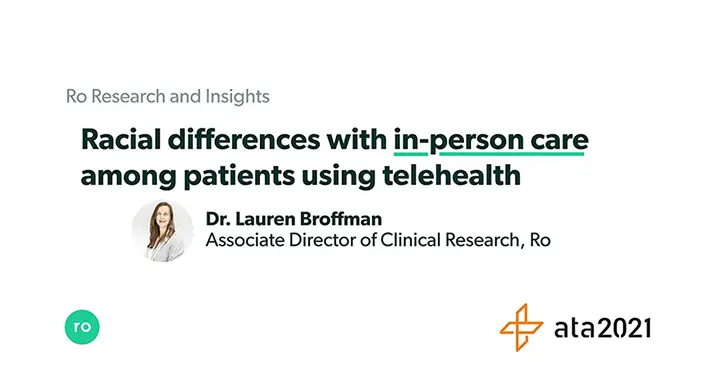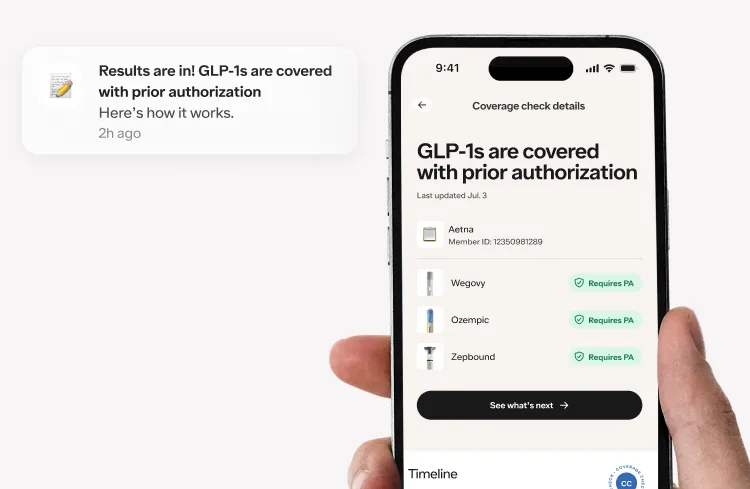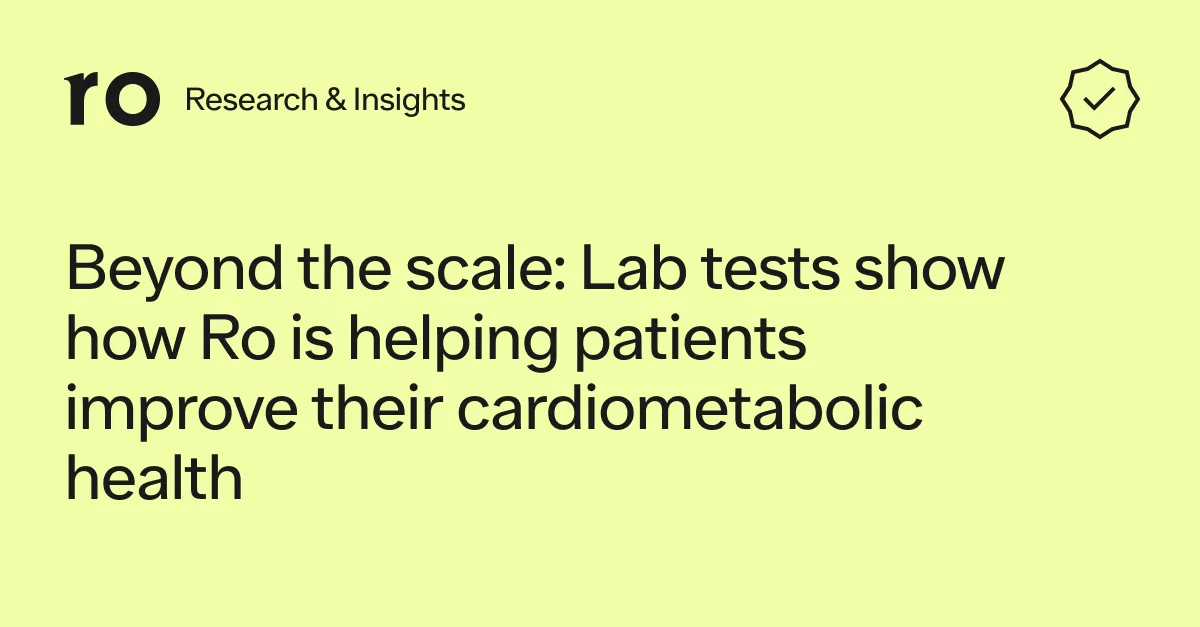Here's what we'll cover
Here's what we'll cover
Here's what we'll cover

The COVID-19 pandemic has had an outsized impact on communities of color across the U.S. In doing so, the pandemic not only spotlighted but also exacerbated racial health disparities across our healthcare system — from rates of COVID-19 infection, to access to care, and health outcomes. However, another well documented consequence of the pandemic was the dramatic increase in use of virtual care, including direct-to-patient platforms (also known as direct-to-consumer) that do not require insurance and accept cash for services.
The success of telehealth in supporting millions of patients throughout the pandemic resulted in a broader realization of the pathways for telehealth to democratize healthcare. However, if this increased role of telehealth in our healthcare system is to continue, it’s vitally important to study the intersection of racial disparities and virtual care.
Proponents of direct-to-patient telehealth believe in its promise as a tool to help reduce health disparities. This belief is rooted in direct-to-patient telehealth’s ability to expand access to care across greater geographies and times of day, remove traditional barriers such as the need for transportation or time off of work, and improve affordability for those with or without insurance. Others worry that telehealth might actually be widening the disparities gap. Despite competing theories, little research exists. This is especially true for research involving direct-to-patient telehealth companies because the cash pay models — making services available without the requirement of insurance — mean that there are no insurance claims (often used as a data source for these kinds of studies).
What we explored
Ro conducted a survey to learn more about our patients’ in-person care experiences, because gaps in access and satisfaction when seeking and receiving in-person care might confer some underlying motivation in the decision to seek virtual care. We then looked at whether in-person care experiences differed across different demographic groups. Understanding variation across in-person experiences is a first step that will allow us to continue to formulate hypotheses and design more research to ascertain whether different kinds of patients seek out virtual care for different reasons, and whether any of those reasons might have implications for telehealth’s impact on disparities.
At ATA 2021, the American Telemedicine Association’s annual conference, Ro shared results from an observational study analyzing survey data among our patients. Written by Veroneque Ignace, MPH, formerly a Research Assistant at Ro, and I, the study surveyed 441 Ro patients, and then compared white (~60% of respondents) and nonwhite (~35% of respondents) responses across five measures:
whether they had used telehealth before,
whether they had a primary care physician,
whether they had any insurance,
whether they had some form of private insurance,
and, whether receiving in-person is a hassle.
What we found
In our study, we found that across all surveyed patients, the majority (>90%) of patients were first-time telehealth users. However, self-identifying patients of color were:
Significantly less likely to report having a primary care physician;
Significantly more likely to be uninsured;
Significantly less likely to have some form of private insurance;
Significantly more likely to report receiving in-person care as a hassle.
These findings suggest that patients’ motivations for trying direct-to-patient telehealth may be more closely linked to their disproportionate experience facing cost and access barriers in the in-person healthcare system. As such, direct-to-patient platforms may have the ability to help address healthcare inequities by continuing to provide easily accessible, affordable care. This study has several limitations, including that these results are just associations and not necessarily causal drivers of the use of telehealth. Given that these disparities exist in the real world, having them reflected in our patient population might not mean much. But identifying the relationship between in-person access and race in a telehealth patient population is the key first step in designing and conducting additional research to learn more.
Further, findings suggest that direct-to-patient platforms aim to reduce existing disparities by promoting inclusivity and equitable access in several ways:
Ensure that access to and delivery of telehealth services are equitable: If patients of color are indeed motivated to seek virtual care as an alternative to the inequitable in-person system, it is imperative that DTC telehealth companies strive to make platforms equally accessible to all that want to use them, and to ensure that everyone receives the same level of care. A key first step is to collect race/ethnicity data as part of the patient onboarding process so that equity can be measured and tracked.
Focus on reducing cash-pay prices as the platforms scale. Cash-pay prices are poised to help reduce disparities associated with inequitable rates of insurance coverage.
Expand services to include equitable treatment for chronic conditions, particularly those with disproportionate prevalence in communities of color.
For a full readout our research, including study limitations and findings, watch my presentation from ATA 2021:
* * *
Please email me, Dr. Lauren Broffman, Ro’s Associate Director of Research, if you have questions or comments on this research or suggestions for future posts or insights. My email is [email protected].









